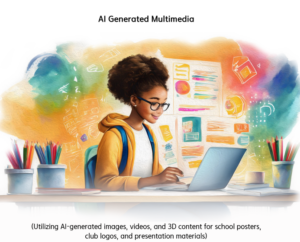Potential Risks:
Unauthorized use and copyright infringement: Risk of copyright infringement if directly
uses or imitates original works protected by copyright law
Generation of Inappropriate Content: Creation of violent, obscene, or hateful images or
videos that may demean certain individuals or groups of people.
Ethical Principles in Practice:
Copyright and License Compliance: Ensure that generated images or videos directly copy other artists’ original works or violate licenses. Use only AI tools that ensure copyrights are not violated during training or when generating content Prevention of Inappropriate se: Ensure generated content does not include socially unacceptable elements (e.g., discrimination/hate speech/illegal content) before use.
Citing Sources: When using AI-generated content, confirm it does not involve copyright issues and clearly specify it as AI-generated content.
